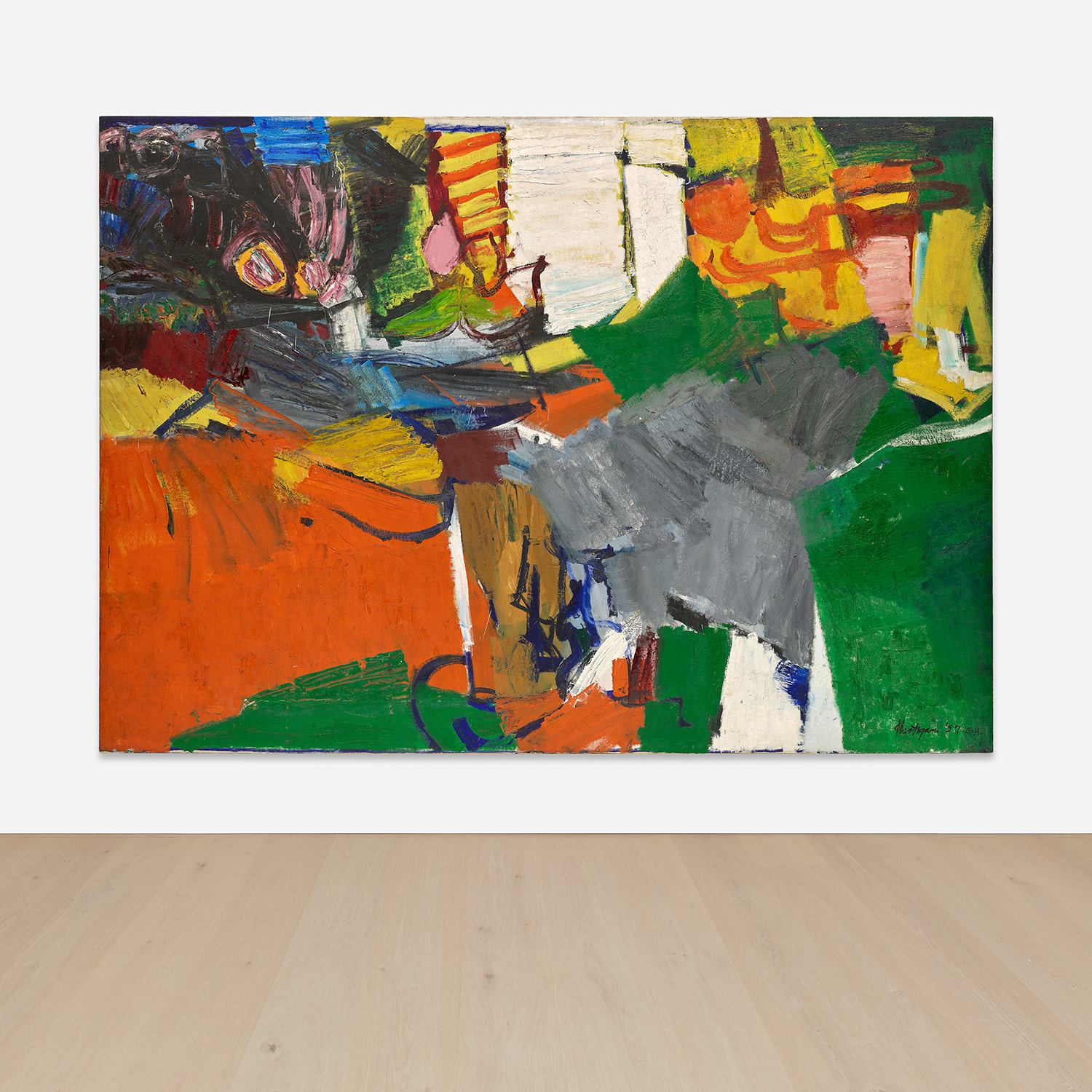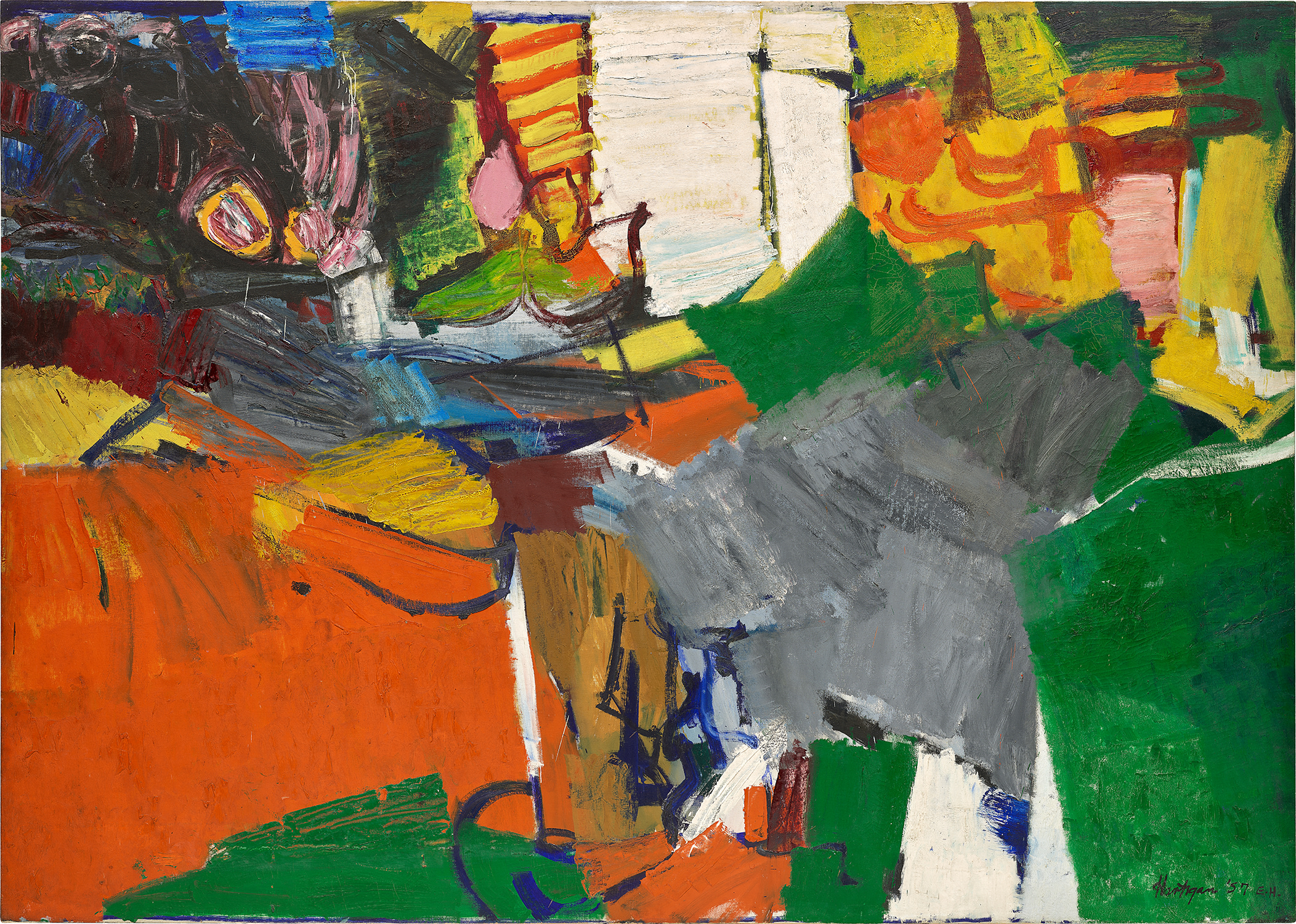



Property from the Terner Family Collection, Los Angeles
20
Grace Hartigan
Montauk Highway
signed, inscribed and dated "Hartigan '57 E.H." lower right
oil on canvas
91 3/8 x 128 1/8 in. (232.1 x 325.4 cm)
Painted in 1957.